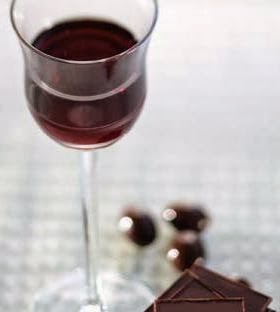Mavrodaphne, the black diva


From a humble peoples' sweet wine, tha achaian variety is brought out through dry vinification to be one of the greek vineyard “protagonists”. It has been almost ben a century and a half since Gustav Klaus inspired the great sweet wine, wrote down the famous recipe and inside the tower of the Petrotou of Patras Mavrodaphne was created. A name that even today automatically comes out of every simple wine lover, which ever sweet wine he tries.
This terrific power of “Mavrodaphne of Patras” - so big that tends to turn the origin designation into a brand name – the fact that for many years the variety with the same name has paradoxically remained in obscurity. The last decade however, has not only come in the spotlight again, but with its use in the dry wine production, is coming out as a new greek vineyard diva!
Although one may encounter many experimental plantings in every corner of Greece, the “heart” of Mavrodaphne beats all over the North-West Peloponnese and the Ionian islands, with Patra and Cefalonia as well, having homonymous origin names for their sweet wines. Moderately productive and relatively premature – since the harvest usually takes place during the first fortnight of September – Mavrodaphne ends up directly in the vinification tanks and before the fermentation is complete, it's amplified in order for it to give the dessert - “diamonds” that we all have enjoyed. Or it used to end up because now, more and more producers seem to believe in its ability to provide not only great dessert wines but dry ones as well.
- Achaia Klaus was using it together with the Cabernet Sauvignon in the Chateau.
- Merkouri Estate made us love her by mixing her with the Refosco; however even they were hesitant to offer the only one full of character.
- But the “tsunami” that Evriviadis Sklavos created, with the “Orgion”did not only hit Cefalonia - “Gentilini Eclipse”- but Peloponese as well, resulting in the creation of any excelltn group of single-variety Mavrodaphne: From “Taos” by Thanasis Parparousis and “Morfeas” by Antonopoulos vineyards to the experimental “Daphne Nera” by Merkouri Estate.
How does a good dry version of this variety look like?
Seemingly, as a first class Syrah, since it contains plenty of black fruits, and botanical aromatic tones with sage being dominant. However, just a sip is enough for the party to begin. Mavrodaphne is furiously “absorbing” with such power equivalent to an American V8 engine, yet manages to maintain a unique freshness and nerve.
Apparently the oenologists who claim that as a variety, it has low acidities, are much more objective than the writer, based on no doubt measurements. Personally, however I find in all of her wines, a bone-shattering acidity. This, and the rare ability to combine great condensation with relatively low alcohol (13,5%) enchant with sweet and sour games before the spicy biter end leaves its imprint in the aftertaste.
All of the above seem nice and good, but every suspicious wine lover will surely consider that not everything can be so divine in the Mavrodaphne “galaxy”. And they are not wrong, since her fault is because she creates exponentially scents. And the only “remedy” towards her strong personality getting covered by the suffocating atmosphere due to the hydrosulfur scent, is the aging process.
Many months before – sometimes even 24 – are required in the barrel and still more in the bottle, which explains the presence of wines on the market produced from 2005 's harvest! “So what's so bad about it?” you' ll ask me. “The reducives go away, the hard tannins become softer, and we consume a ready, mature wine”. Of course I will agree but let me remind you howeverthat all of these come with a cost which practically excludes Mavrodaphne from the production of daily delightful wines. After all, a diva can never be cheap, right?
And as it was natural, the “fever” around the variety has affected the sweet wine category. So, some new labels are mostly single-varietal – having sidelined the corinthian raisin – while others have a more modern style, sacrificing the traditional, velvety feel to the fruits and power benefit – modeled to a Vintage Port.
For the pioneer – Klaus – Mavrodapnhe might have been equated with his pain for the ultimely loss of his fiancee, Daphne; but for today 's wine lovers is equated with joy, since the dark dry or sweet beauties it offers, fill up the glasses with unique aromas and tastes. Cheers Gustav!
She loves coffee and cigars.
Don't think that great dry Mavrodaphnes will open up to you just like that. The “dense” dark character demands to be transfused in a decanter for at least an hour, big glasses in the shape of closed tulip (like the ones for Cabernet Sauvignon or Syrah) and high temperatures (18-19 oC).
Cook a rich meat in the pot or a rich recipe with eggplant to place them next to the bottle. No to soft meats, since her strength will devour them.
To the contrary, a dessert containing coffee, nuts, caramel, figs or a blue cheese like Stilton is what suits an aged sweet treasure, served at 12 oC. So what better “end” than a 20 year old Mavrodaphne diamond and a spicy cuban cigar next to it?